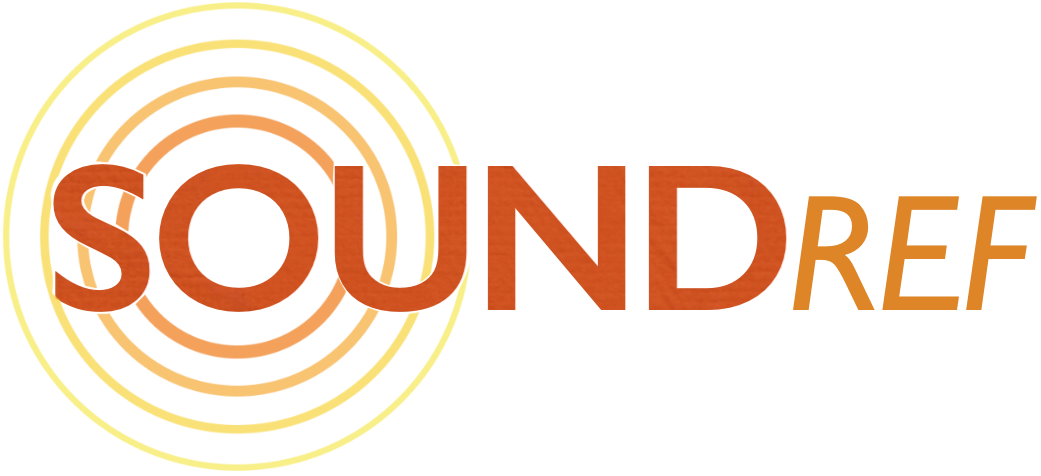The Definitive Neumann KM 184 Review
The miniature mics with an impressively large sound
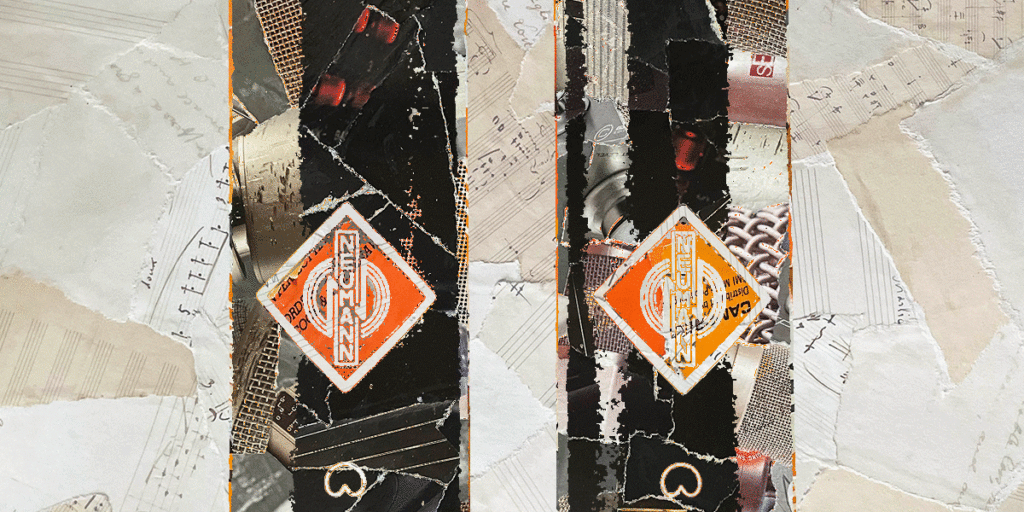
Reviewed by: Paul Narang
Review date: February 2024
Current price per mic: Around $700-$800
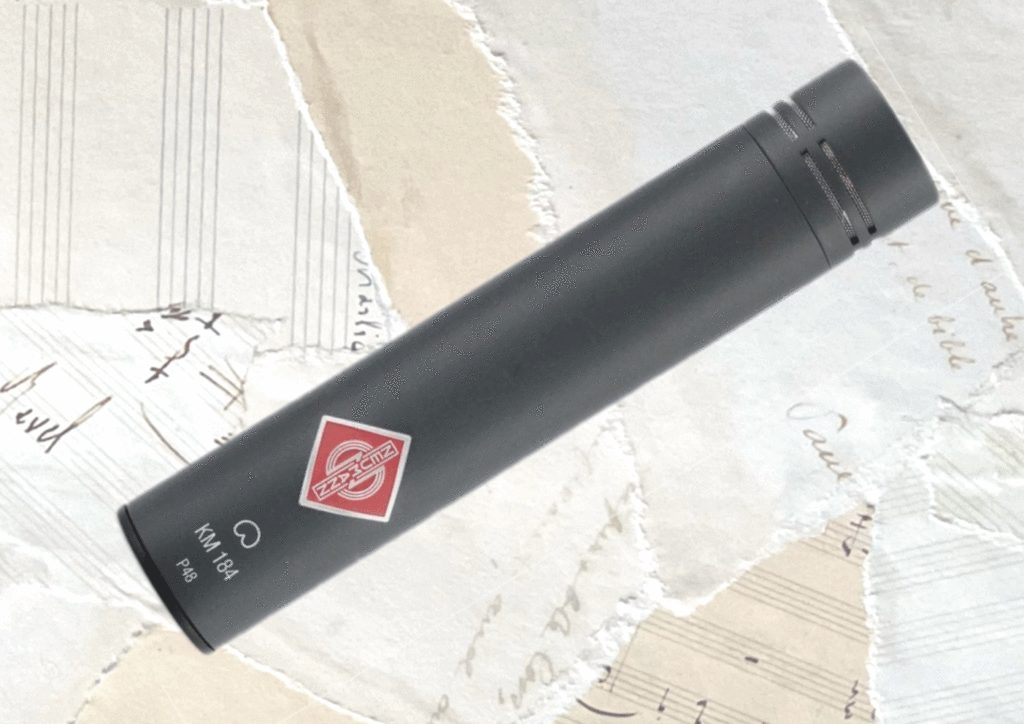

Neumann KM 184 Review
| Pros: | Cons: |
| Incredible sound Minimal off axis colouration Versatility Small size | Expensive, particularly for a pair Very sensitive to plosives |
Neumann KM 184 Review
The Neumann KM 184 is found in studios around the world. This instrument mic can be used solo, or as part of a stereo pair. It’s great for acoustic guitars, drum overheads, and small and large ensembles. The KM 184 offers a reliable, classic sound that stretches back decades.
What is it?
The Neumann KM 184 is an end-address cardioid small-diaphragm condenser mic. Often referred to as a pencil mics, these kinds of microphones are mostly used to record instruments.
The KM 184s are well suited to a huge variety of instruments and genres, through close or ambient mic positioning. You’ll often find a pair of KM 184s in recording studios, for stereo recording.
The KM 184 is the successor to the classic KM 84 which, along with the famous U87 (review here), was introduced by Neumann in the mid 1960s, quickly became an industry standard. In the mid 1980s, Neumann revamped the 84 to into a transformerless circuit, continuing the legacy into the 21st century with the new KM 184.
The KM 184 offers a wide frequency response, a wide dynamic range, and a sound which is at once both smooth and detailed. With it’s versatility and breadth, the KM 184 has become a favourite of top recording engineers across the globe.
Other Neumann mics in the KM range
- Neumann KM 183
A small diaphragm condenser with an omni directional pick up pattern
- Neumann KM 185
Similar to the KM 184 and 185, but with a hyper-cardioid pick up pattern
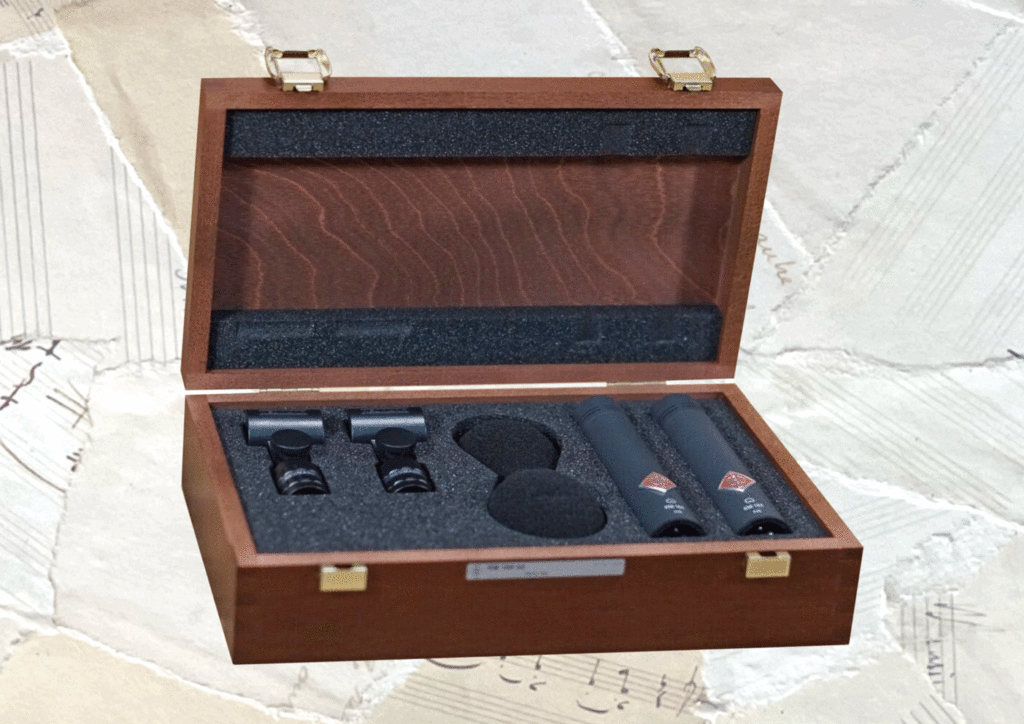
In the box
We acquired a matched pair of KM 184 MTs (the black versions) for testing. The package arrived in a beautiful wooden box, really making them feel like something special.
- Two microphones (with contiguous serial numbers)
- Two windscreens
- Two stand mounts.
The Neumann KM 184 is also popular as a single mic, so we tested it on its own and in combination with others mics. The single KM 184 also ships with a windscreen and stand mount.
Neumann KM 184 Polar pattern
The KM 184 uses a cardioid pickup pattern, which looks like an upside down heart shape around the head of the mic. It picks up sound mainly from the front, while rejecting sound from the back and sides.
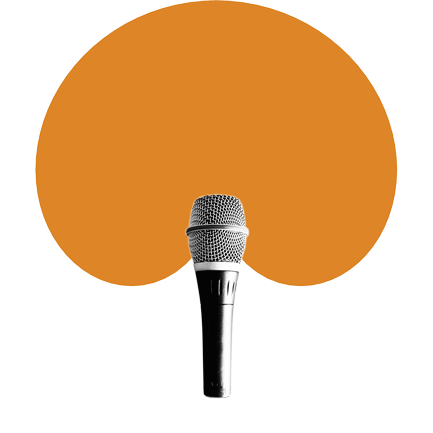
The cardioid pattern is often well suited to a home studio where the acoustics are less than ideal. It will pick up the sound of the vocalist in front of the mic, while rejecting the sound of the room.
No on/off switch on the Neumann KM 184?
There’s no on/off switch on the KM 184 or any of the KM variations.
Pro-level mics often don’t have on/off switches, because it make it less likely that the singer will accidentally turn off the mic mid performance. The recording engineer can easily mute the mic from the mixing desk if needed. It also means there’s less to go wrong the mic.
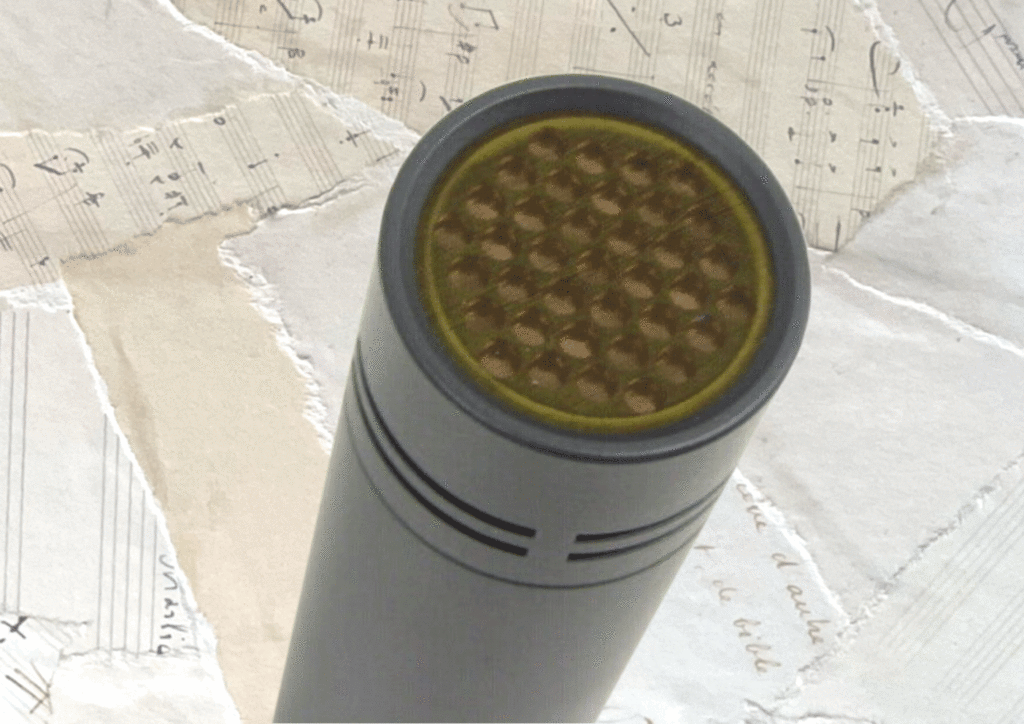
Phantom power for the Neumann KM 184?
As a condenser mic, the Neumann KM 184, plus it’s variants, the 183 and 185, all require phantom power. This is a small, low voltage current sent to the microphone from a microphone preamp, mixing desk, or audio interface.
Most industry standard desks or interfaces are capable of providing phantom power, which is sent through the XLR cable to the microphone. If your audio interface or mixer doesn’t provide phantom power, there is a solution: You can connect your mic to an external 48 volt phantom supply. Then connect the output of the phantom supply to the mixer, or audio interface.
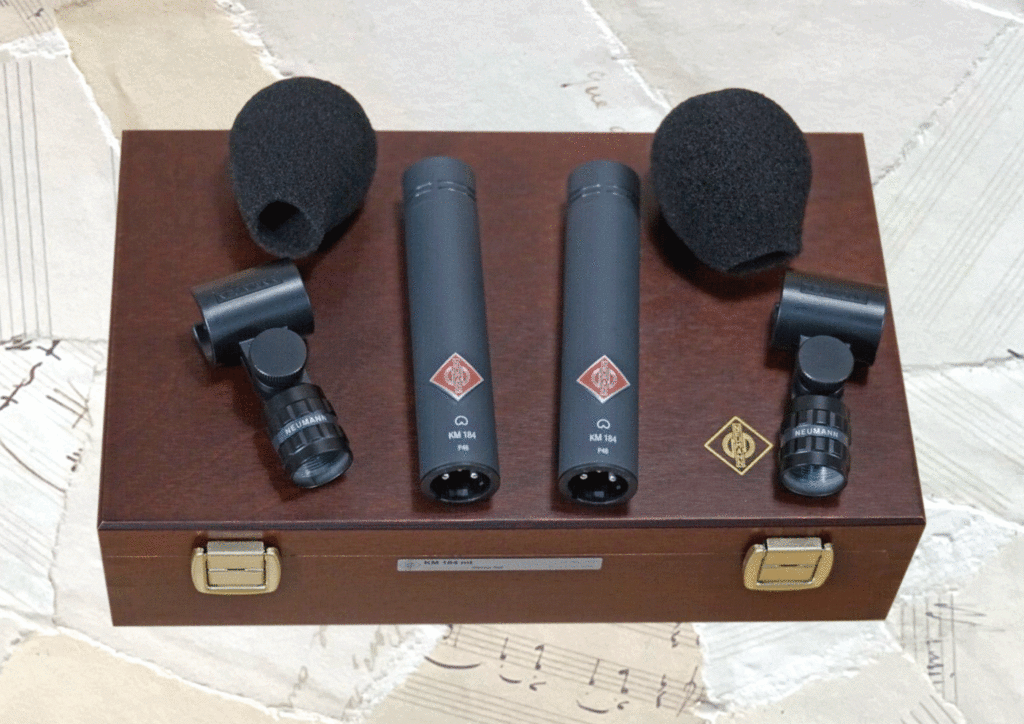
Connecting the KM 184
The Neumann KM 184 connects with a standard XLR cable, directly to the audio interface or mixer. XLR are the standard connectors on all professional studio equipment. They’re ‘balanced’, which means the cables are shielded from interference and carry a higher signal than unbalanced cables.
XLR cables are the only cables capable of carrying phantom power to a mic.
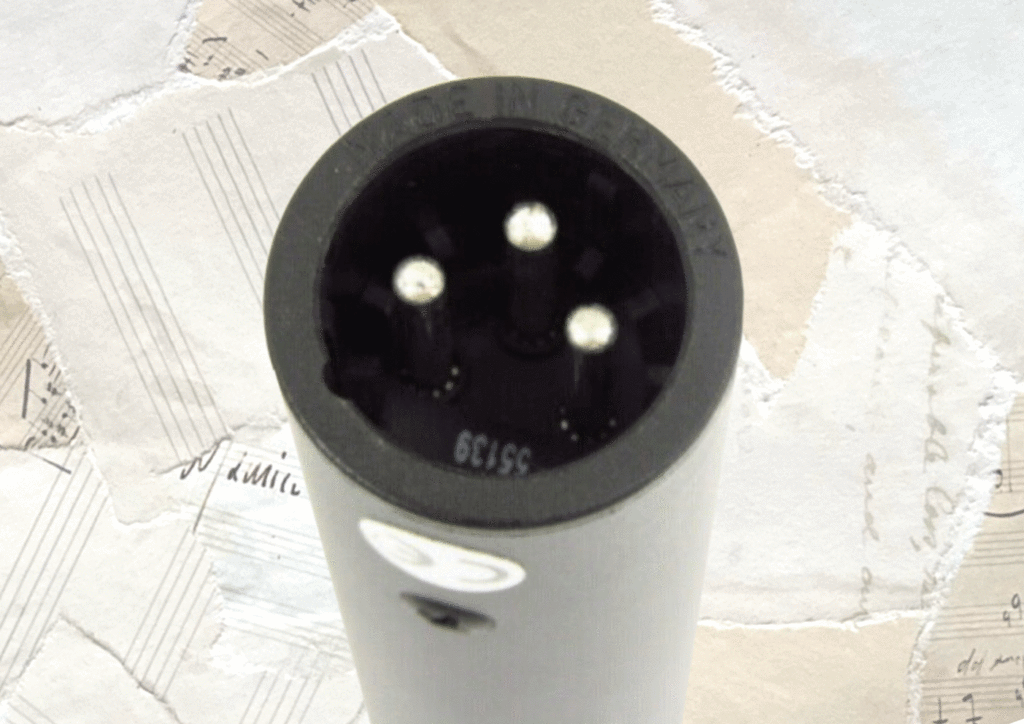
Neumann KM 184 Design and Build
The first thing I noticed about the KM 184s is just how small they are. these are tiny, unobtrusive microphones, just over 4 inches in length.
The Neumann KM 184 has a simple, clean and classic design. It’s a discreet, cylindrical microphone with an all-metal chassis and a fine metal grille covering the capsule. The base of the 184 is embossed with the famous Neumann logo, and the rear houses the XLR socket.
The KM 184 is available in two colours: black (technically called the KM 184 mt) and nickel finish. I think they both look great.
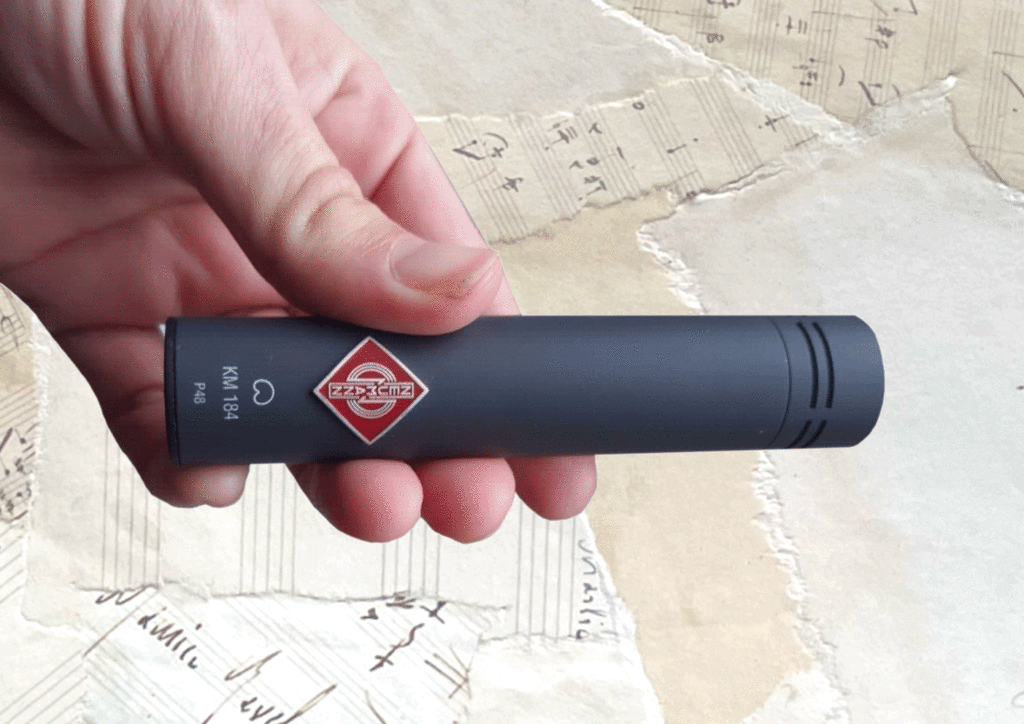
Inside the KM 184 is a FET transformerless condenser circuit, and a gold-sputtered capsule. Like most Neumann microphones, it’s handmade in Germany. The design is so simple that you won’t find any buttons or switches on the microphone at all.
Neumann KM 184 Dimensions and Weight
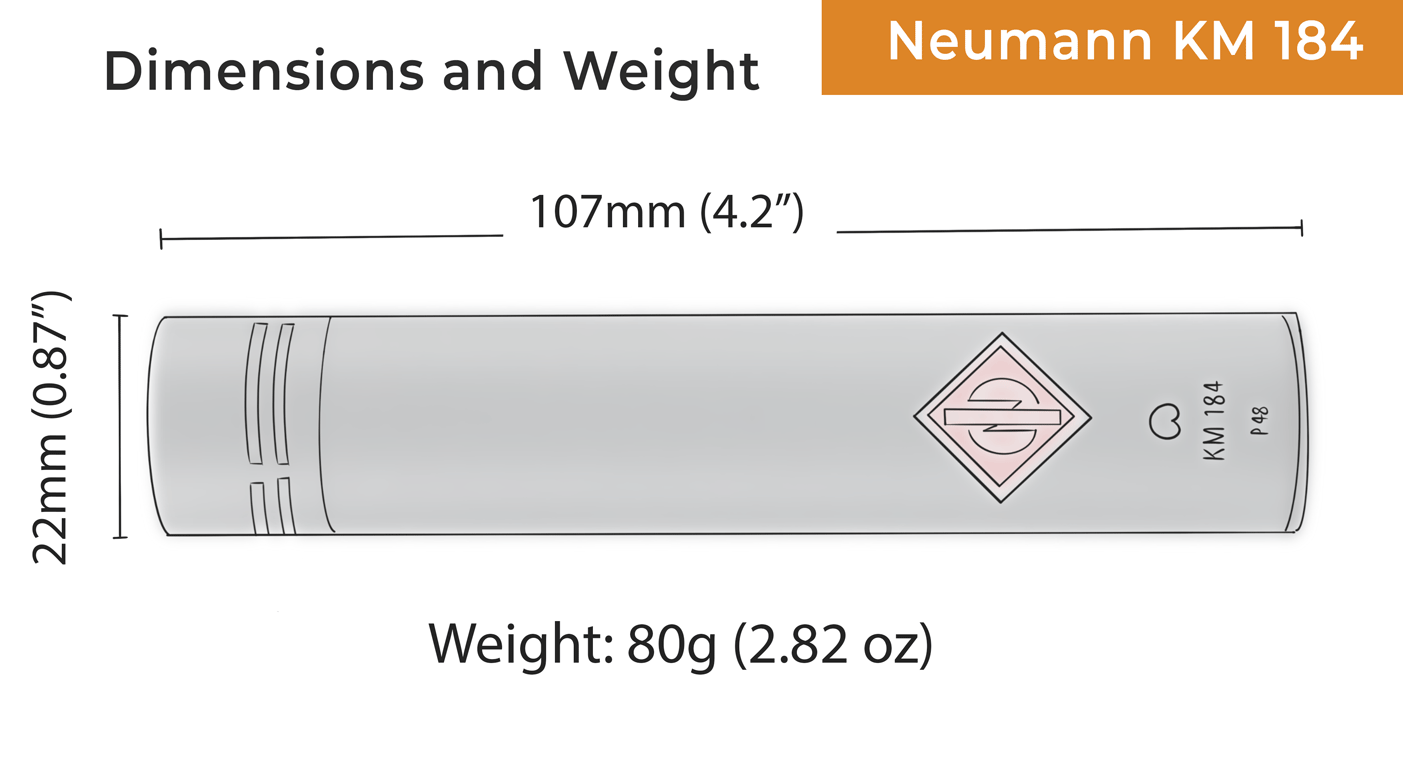
The KM 184 has a diminutive, slim profile, and is lighter than many side-address studio condensers. It’s perfect for an all round instrument mic, as it’s easy to position without getting in the way.
- Diameter: 22 mm (0.87″)
- Length: 107 mm (4.2″)
- Weight: 80g (2.82 oz)
KM 184 Frequency response
Listening to the Neumann KM 184s are a joy – they’re a study in crystal clear, accurate and authentic sound. As you’d expect, the frequency range stretches from 20Hz – 20kHz, the full range of human hearing.
The midrange of the microphone’s frequency chart is flat, but there’s a presence boost starting at 4 kHz, and peaking +2dB around 8 kHz, before gently rolling back. This is what gives the KM 184 it’s special character – open and natural brightness and shimmer. The low end has a natural sounding roll off from around 400 kHz.
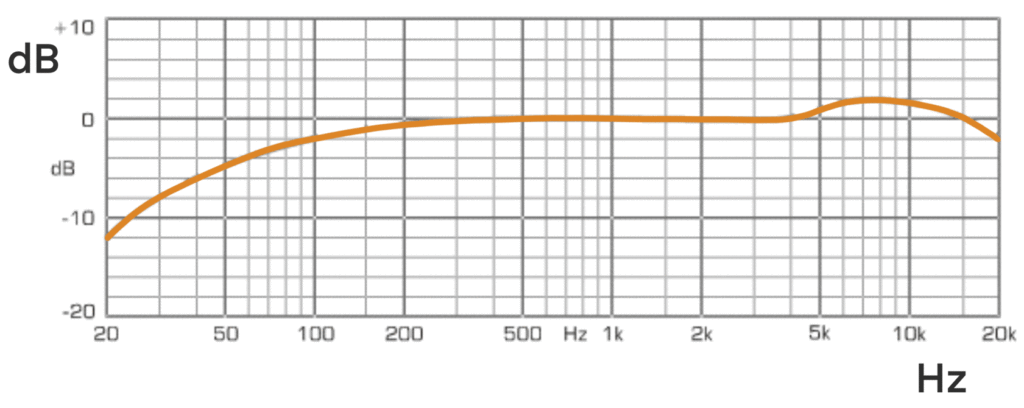
There are no sharp peaks or troughs in the KM 184’s frequency chart. The presence boost sits just where you’d want it for a gently flattering sound, which never sounds too extreme. This small boost sets it apart from its predecessor the KM 84, along with the slightly steeper low-cut at the bottom end.
Neumann KM 184 Sensitivity and Impedance
The KM 184 has a low impedance rating of 50 ohms, which will ensure a high-quality signal, even over long cable lengths. It’s sensitivity rating of 15 mV/Pa, is high, bit not quite as high as some other studio condensers, like the U87.
I consider it situated in the middle ground for an instrument mic – sensitive enough to make ambient and room recordings, but not so much that you can’t use it as overheads on a drum kit.
The KM 184 has a max SPL of 138db, which is quite high for a condenser mic, and certainly useful for louder instruments such as drums and horns. It has an incredible self-noise rating of just 13 dBa, so no chance of hearing noise or hiss during those quieter moments of recording classical music.
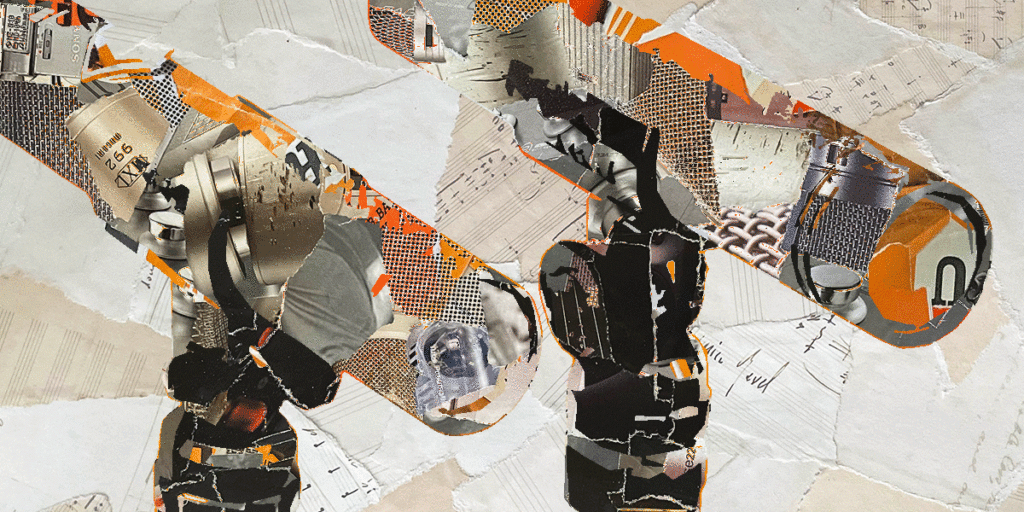
Neumann KM 184 Sound quality
It’s no surprise that the sound quality of the Neumann KM 184 totally lives up to its reputation in practice. The sound is simply excellent – if you’re familiar with the Neumann U87, you’ll recognise that uncoloured sound which also manages to incorporate a smoothness reminiscent of classic 60s and 70s recordings.
But despite the sound quality, I value the KM 184 for its consistency. THe 184 is reliable in 99% of situations. Whatever instrument you’re recording, you know you’re going to get a clear authentic tone.
One great feature of the KM 184 is it’s off-axis response – it seems to have a very similar tone to on-axis sound. This makes it perfect for recording ensembles across a stage, or wider sound sources, such as drum overheads. THere’s a solid consistency across the stereo field.
The slight presence boost works well for for mid-distance stereo recording, as it preserves the top end detail which can sometimes get lost when instruments are way back from the mic.
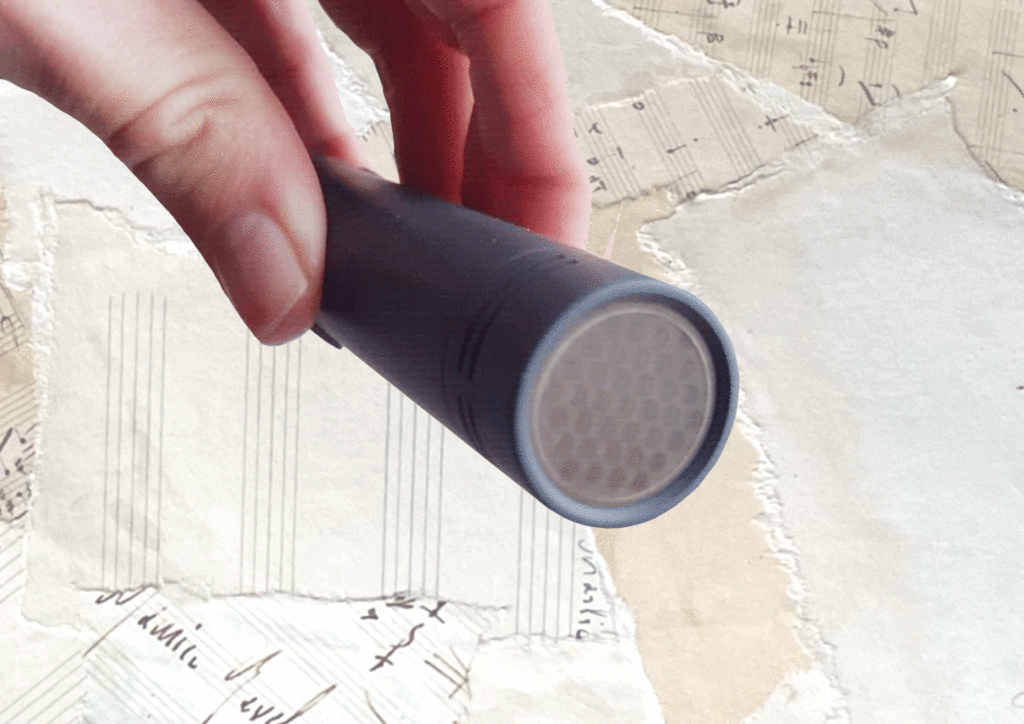
KM 184 for recording guitar
Over the years, the KM 184 has earned a reputation is an excellent choice for recording acoustic guitar. It captures tons of detail and nuance, which is ideal for finger-picking styles, and the nylon strings of classical guitars. The bright sound also works particularly well on strummed steel strings, especially if you’re looking for something to cut through the mix.
There’s many ways you can use the KM 184 in a when recording guitar. Doing this review gave me the chance to try a matched pair, which resulted in a beautifully wide sonic sound stage, that seemed to sparkle in the air. I’m already used to recording guitar with just one KM 184, which is ideal for use in layered mono recordings.
I also like to pair it with a side address condenser and sometimes even an SM57 to get a greater depth of tone. One of my favourite combinations is pairing the 184 with a Rode NT1 to record my small Taylor acoustic guitar. A position I’ve found to consistently work for me is the KM 184 over the sound hole and the NT1 over the bridge.
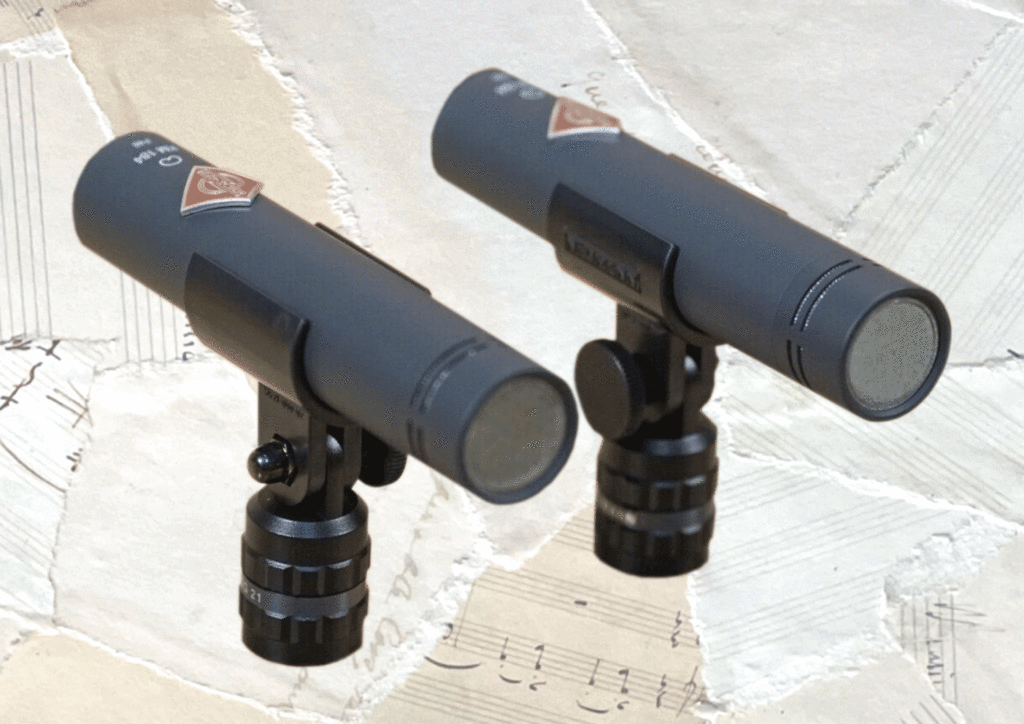
The KM 184 also works well on electric guitar cabs, giving a fairly neutral tone but calming and taming the top end, although I personally think it’s best suited to clean guitar tones.
KM 184 in the studio
As well as acoustic guitar, the KM 184 is great for capturing a huge range of other acoustic instruments. It’s well suited to piano (either alone or in a pair), strings, woodwinds, brass and small percussion. It’s also a popular choice for drum overheads, capturing that sparkly top-end on cymbals, and those gestural details on rims and toms.
As a pair, the KM 184 is often used in professional settings for capturing large and small ensembles. You can get great results recording string quartet parts one at a time, to mix with a vocalist. But they work equally as well for larger scale orchestral recordings, create a really well-balanced stereo image.
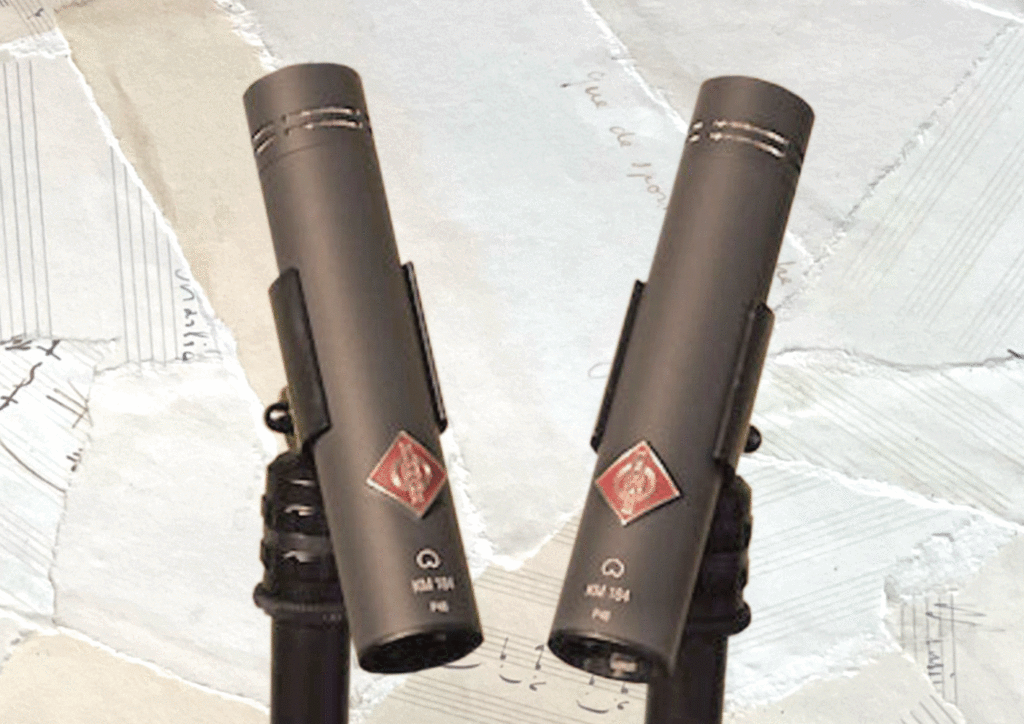
My criticism of the KM 184 is that they’re not always ideal for very close miking – they work best in mid-field or near field scenarios. I also wouldn’t recommend using them for vocals, unless you’re recording classical and opera singers, where the mics are positioned at a greater distance from the vocalists.
If you are going to use the KM 184 for vocals, do be aware that it is extremely sensitive to plosives. I’d advise using a windscreen or pop shield to avoid damaging the diaphragm.
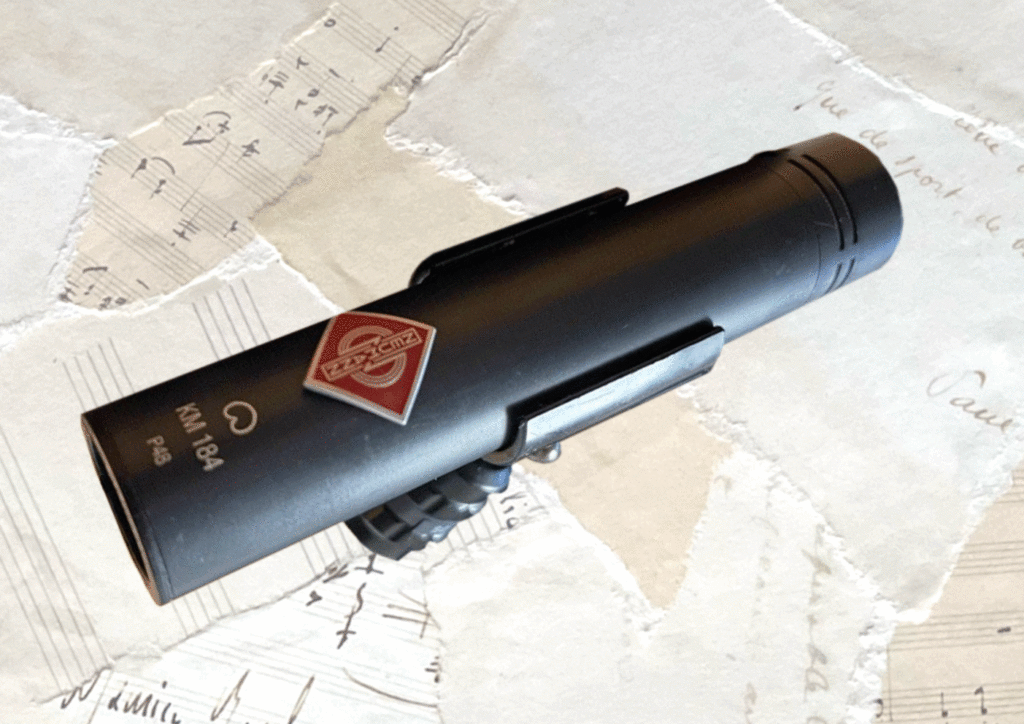
Neumann KM 184 vs KM 185
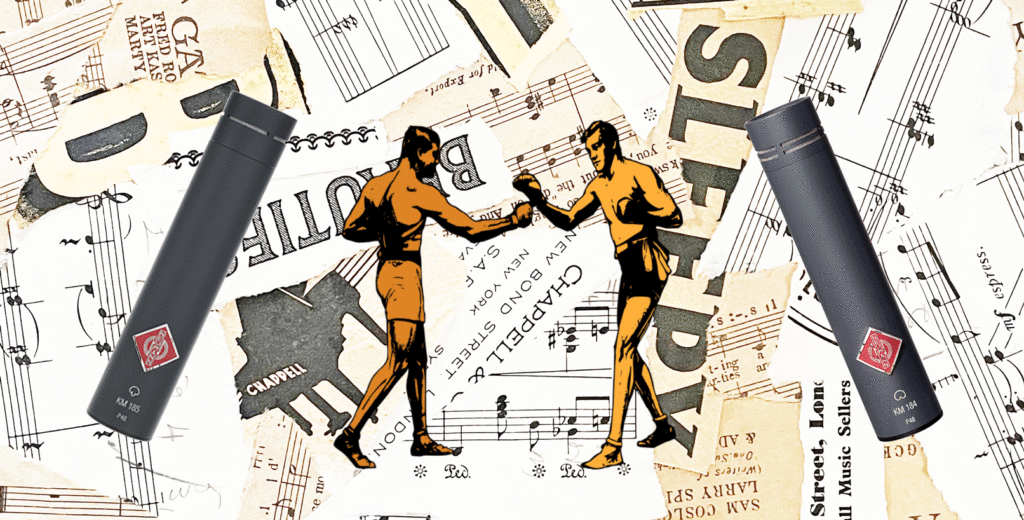
Neumann have 2 variations of the KM 184 – the KM 183 omnidirectional version, and the KM 185, with a hyper-cardioid pattern. The KM 185 is almost identical to the KM 184 in size, weight, design and styling.
Compared to cardioid, a hypercardioid mic is less responsive at the sides, with a small amount of sensitivity at the rear. The KM 185 is a more directional mic, useful for focusing in on a specific instrument whilst reducing bleed from the sides.
As well as the polar pattern, there are some other subtle differences between the two mics. The KM 185 is a little less sensitive at 10 mV/Pa, and has a higher SPL of 142 dB, so may be better suited to horns and drums. It also has a more pronounced presence boost than the KM 184, giving it a slightly brighter sound.
Neumann KM 184 vs U87
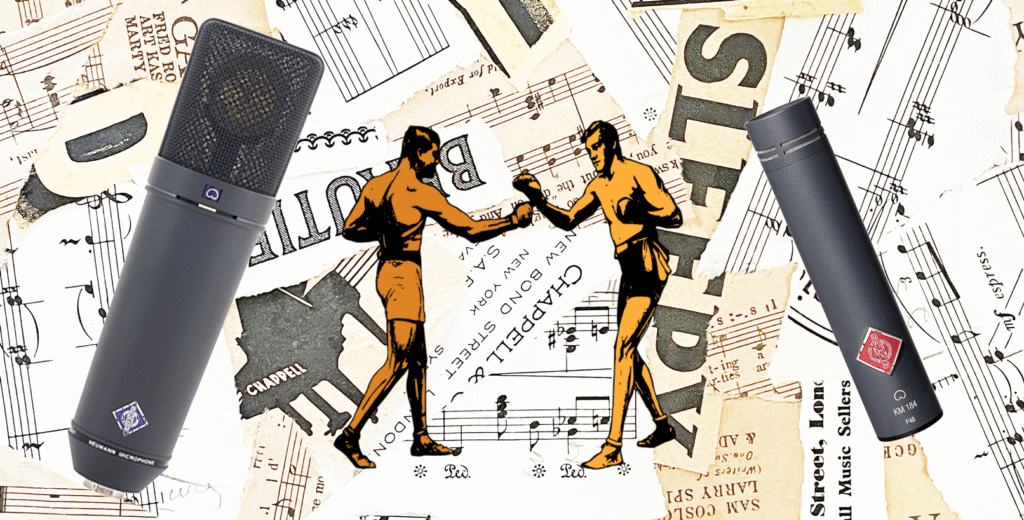
The U87 is perhaps Neuman’s most well known studio mic, featuring on countless classic recordings since the mid 1960s. It’s a large diaphragm condenser often used on vocals, but also extremely versatile and popular as an instrument mic.
Unlike the KM 184, the U87 has a switchable polar pattern (choose between omni, cardioid and figure-of-eight) and also has a switchable low-cut filter, and -10db pre-attenuation pad.
Despite their differences, it’s worth comparing the U87 and the KM 184, as there’s some overlap in how you might use them. They’re both incredible for acoustic guitar, each providing warmth, clarity and detail, and both are also great choices for piano, woodwind and strings. You can also also use the U87 as part of a stereo pair for recording small ensembles.
In cardioid mode, the two microphones have very similar frequency responses in the mids and highs, with the U87 having a similar presence boost to the KM 184. However the U87 extends a little further in the low end, giving it a bit more bass and depth.
Ultimately the main difference in these two microphones is how they behave, and how you need to use them. The U87 is great for close miking, and fairs well in midfield, whereas the KM 184 shines in midfield to ambient recording situations. The compact, end-address shape of the KM 184 is also more suitable for drum overheads and XY stereo setups.
Another key difference is of course the cost – you can pick up a matched pair of KM 184s for around half the price of a single U87!
KM 184 Stereo Miking Techniques
One advantage of having 2 of the same microphones, is being able to capture accurate stereo recordings. The simple way of doing this is to space the mics a few feet apart. You’ll get a good recording, but there’s a couple of techniques I use which can give you a much more accurate and focused sound.
Instead of keeping the mics apart, you cross them over each other – I’ll show you my 3 favourite stereo pair positions (called XY positions).
XY – Coincident
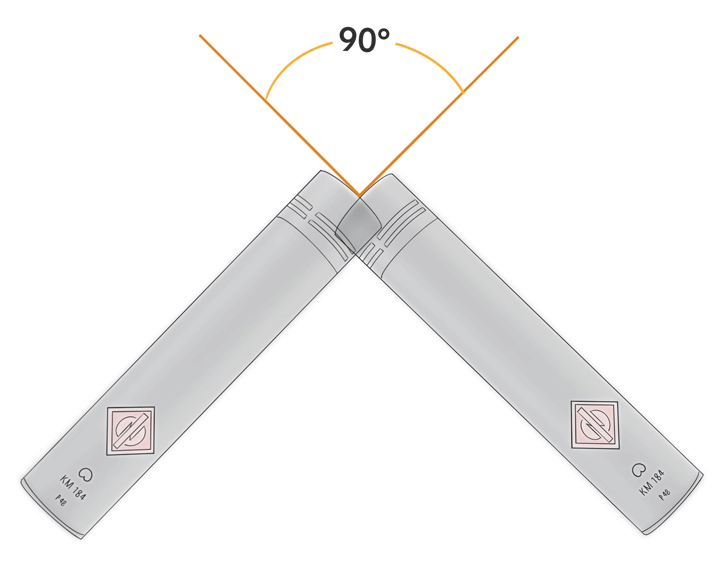
For this placement, the capsules of both microphones are placed closely above one another in an X configuration. Make sure they don’t actually touch, or you might introduce some mechanical noise.
They’re most commonly used at an angle of 90 degrees, but you can widen it up to 135 degrees, depending on the size of the ensemble you’re recording.
XY – Near coincident
There are variations of the coincident, like the ‘NOS’ technique, where the microphones still cross each other, but the capsules are not directly on top of each other. You can still use a 90 degree angle, but the microphones cross at the rear, resulting in a wider stereo field.
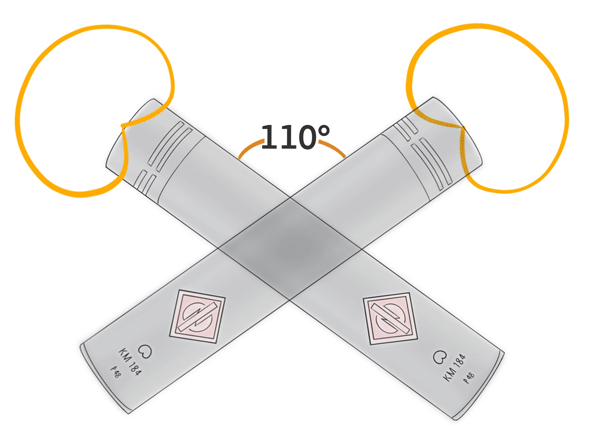
Or in the ‘ORTF’ position, you have the microphones cross in the middle, with a wider angle of around 110 degrees, with the capsules positioned around 7 inches apart.
This is designed to replicate human hearing, with the distance between the mics, roughly the same as between our ears. This is great for a very natural sound, and good for large ensembles and orchestras.
What else do you need?
The KM 184 comes with a windscreen and a stand mount. All you’ll need is a high quality XLR cable and a mic stand to mount it on. Mic stands stop the possibility of any handling noise in the studio, and reduce vibrations from the floor.
Try a good quality boom stand, with a tripod base like the K&M 210/2
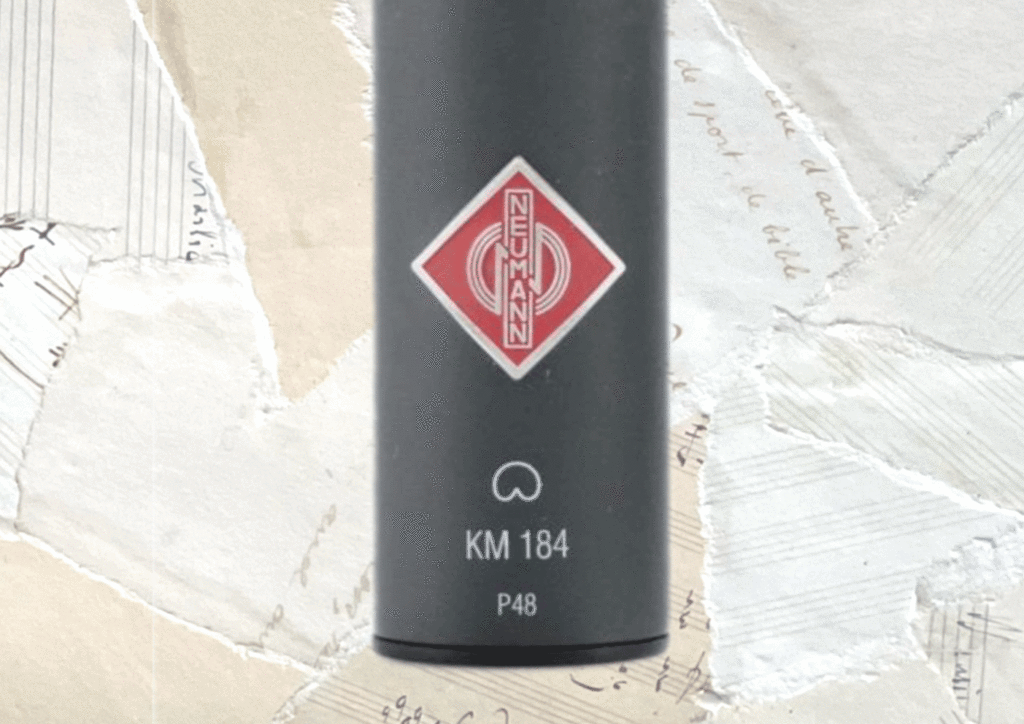
Conclusion
Since its inception in the 80s, the Neumann KM 184 has earned its reputation as an industry standard, making it one of the most widely used studio instrument mics today.
It’s reliable, versatile, and offers a clear and smooth sound on most sources – full, sparkling acoustic guitars, bright and shimmering cymbals, warm and rich string quartets or full and dynamic orchestral recordings. Used alone or as part of a pair, the KM184 should be in the locker of any serious recording engineer.
Neumann KM 184 Frequently Asked Questions
Does the KM 184 need phantom power?
The KM 184is a condenser microphone, so it does require phantom power. You can receive power from the mixing desk, audio interface or a stand-alone unit
Can you use condenser mics on stage?
Condenser mics can be a great choice for stage use as long as they’re treated with care. The KM 184 is often found on the orchestral stage, where they’re kept on stands away from the musicians.
Is there a budget alternative to the KM 184?
If you’re stuck for cash, try out the budget priced NT5, which can achieve a similar sound, though not to the same quality as the KM 184.
What are the best mics for recording vocals?
